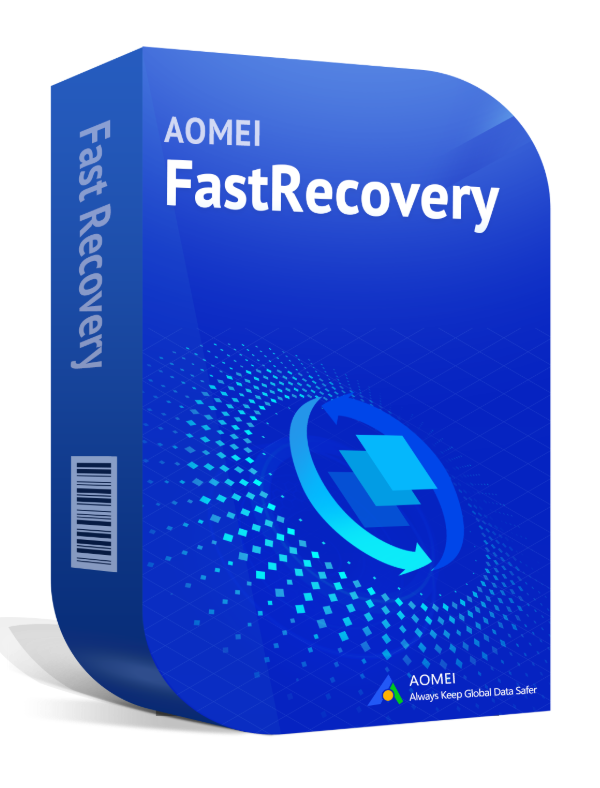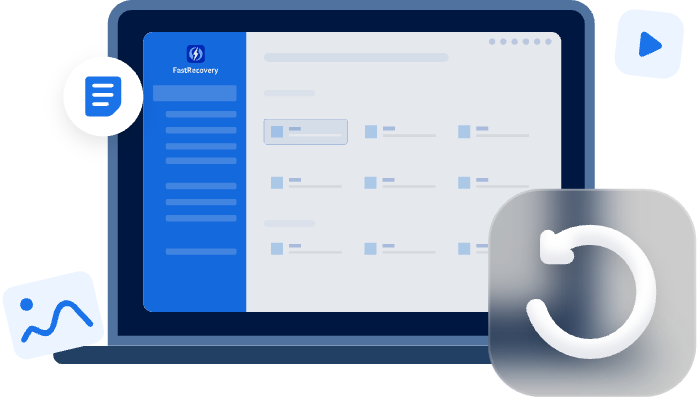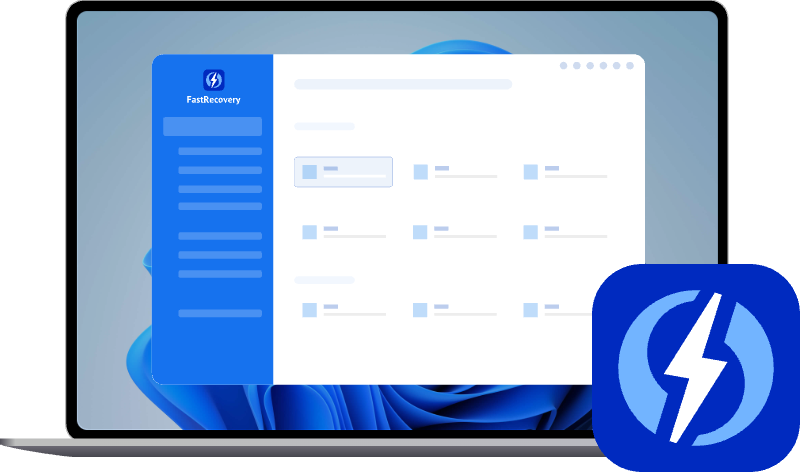Physically Broken Micro SD Card Recovery [Possible? and How]
This article describes whether and how physically broken micro SD card recovery is possible. Using DIY tools like AOMEI FastRecovery is much easier if your card detectable.
Physically Broken Micro SD Card Data Recovery...Possible?
"I have been using a 64GB SanDisk memory card for a long time, and I recently connected my phone to my computer, but I can’t view my data since it’s showing some corrupted files, and clicking there only shows formatted alternatives, but I need a backup of my memory card because I have essential files on it…Could someone please assist me in retrieving my data?"
Yes, your Micro SD card data can be recovered, but it depends heavily on the extent and type of damage. Here are 3 common types:
- The mild connector issues are often recoverable with DIY tools.
- A cracked PCB or controller chip typically requires assistance from a professional.
- A burned NAND chip is usually unrecoverable unless backups were made.
🚀 Your success rate increases if:
- You stop using the card immediately.
- The NAND chip is undamaged.
- You consult professionals with specialized hardware.
❌ When DIY isn’t enough:
Many data recovery software like AOMEI FastRecovery are excellent for logical issues (accidental deletion, slightly damaged, etc.), but they won’t work if the SD card isn’t physically detectable.
Attempting chip repair or micro-soldering without expertise may permanently destroy the card. If your data is important, skip DIY methods and consult a professional recovery service.
What Happens on a Physically Damaged Micro SD Card?
Physical damage to a micro SD card can happen because these tiny storage devices are fragile. What’s more, not all physical damage is visible. Even if your card looks fine, there may be unseen internal issues, highly related to your data, e.g., the NAND flash memory or controller chip.
Here are some signs that point to hardware-level problems:
- Cracked or bent casing: A visual inspection may show chips, fractures, or warping.
- Snapped or bent connector pins: The gold connectors might be scratched, bent, or broken off.
- Card not recognized by devices: Plug the card into different readers if it’s not showing up at all, it could be a hardware fault.
- Heat or smell: If your card emits heat or a burnt smell when inserted, unplug it immediately to prevent further damage.
How to Perform Physically Broken Micro SD Card Recovery (3 Methods)
Here are some useful methods for physically broken micro SD card recovery. Note that your data is still on the card, but it’s fragile.
- Don’t force it into a card reader. This can break your reader and make the damage worse.
- Don’t use glue, tape, or attempt DIY soldering without training. Poor repairs may destroy the chip entirely.
- Don’t install or run any data recovery software on the broken card. If it can’t be detected by Windows or a reader, software won’t help.
Method 1: Micro SD Card Reader Swap (for Minor Contact Issues)
This method applies where the controller is intact, but the card's connectors are broken or worn out. But this requires precision tools and a soldering microscope.
Steps 1. Find an identical SD card (with the same model and controller).
Steps 2. Carefully remove the casing of both cards.
Steps 3. Solder or connect the damaged card’s memory chip to the healthy card's board.
Steps 4. Insert the card into the reader and attempt to reconnect with your computer. If it’s detected successfully, you’ll access the data on it.
Method 2: Deep Scan Broken Micro Card for Data Recovery (for Logical Errors )
AOMEI FastRecovery is a reliable Windows data recovery software that can recover data from a physically damaged micro SD card (if there are any logical errors or it’s slightly damaged). It’s user-friendly, fast, and has superior file recovery.

- It has a free edition that can recover data of over 500 MB.
- With a clean and intuitive user interface and well-organized, users can get started quickly without technical skills.
- It offers two scanning methods, with deep scanning for more complex situations, e.g., physically broken micro SD card.
- Recover deleted documents (e.g., recover word files), images, audios, videos, compressed files, emails, etc., over 1000 data types.
- It’s safe and reliable to use as it’s read-only and does not cause data overwriting. Contact us if you have any questions.
Step 1. Select the broken card to scan
Connect the physically broken micro SD card to your computer using a card reader first (if possible). Open AOMEI FastRecovery after installing. Then, switch to the USB/SD Card Recovery section, hover your mouse over the SD card, and click the Scan button.
Step 2. Deep scan your micro SD card
It will start Deep Scan automatically to scan all sectors of the selected micro card and find files buried deeper in the file system. This mode takes a longer time, please be patient.
Step 3. Find and recover data
You can choose to prioritize finding and recovering data that means a lot to you without waiting for the scan results to come in. It allows you to search, filter, or find files in the original location. What’s more, you can double-click the files to preview them and confirm.
- Search: Type the file name or extension in the search box, especially useful for recovering specific files or folders.
- Filter: Specify the data type (e.g., documents, audios, videos, etc.) and its size.
- Sidebar directories: Click the Deleted Files/Recycle Bin on the left to find files in the original location.
To get the best results, you can wait until the scanning process is complete. Then, select all data and click the Recover button to get started. It is worth noting to always save the recovered files to a new location, as recovering to the original location may result in data overwriting.
Method 3: Seek Assistance from Recovery Services (for Valuable Data)
If your micro SD card is severely damaged, especially related to NAND flash memory or controller chip, you need to seek assistance from professional data recovery services, e.g., Secure Data Recovery, DriveSavers, OnTrack, Geek Squad, etc. Choose companies with strong reviews and "no data, no charge" policies.
Usually, these services provide users with specialized data recovery technicians and use of Class 100 cleanrooms, high-end diagnostic tools, chip-level recovery options, etc. Prices range from $300 to over $1,000, with turnaround times of 3 to 10 days. Success, however, depends on the severity of the damage and the health of the NAND.
How to Prevent SD Card Damage and Data Loss
If you don't want to lose any data due to damaged SD card, please take some essential prevention measures to prevent it and data loss. Here are some key points:
- Use protective cases or USB adapters: Micro SD cards are delicate — protect them from moisture, static, and bending.
- Avoid excessive removals and insertions: Constantly removing and inserting your SD card increases wear on the contacts.
- Stick to trusted SD card brands like SanDisk, Samsung, Lexar, or Kingston. Look for cards with high endurance ratings.
- Setting up a backup-first data workflow: Always keep 3 copies of your data, two of them on 2 different devices, with 1 offsite, such as external drives, cloud drives like OneDrive, etc. It will be better if it’s an automatic backup.
Conclusion
In many cases, it’s possible to perform a physically broken micro SD card, especially if the NAND or controller chip is intact. For minor issues, a DIY fix might work, but don’t underestimate the complexity of physical recovery. When in doubt, trust the pros.
Preventing future disasters through backups and proper handling is always the best (and cheapest) strategy. Free Windows data backup software - AOMEI Backupper Standard is recommended, as the built-in tools do not handle SD card data backups well.
FAQs
1. Can I recover photos from a snapped micro SD card at home?
Only if the damage is minor and the NAND chip is unharmed. You'll need technical tools and skills.
2. How much does professional SD card recovery cost on average?
Anywhere from $300 to $1000+, depending on the damage and service provider.
3. Is it safe to freeze a broken SD card to recover data?
No. That’s a myth that might cause more damage. Never freeze electronics.
4. Will recovery tools like AOMEI FastRecovery help in physical damage cases?
Not if the SD card isn’t detected. These tools are for logical failures, not physical ones.
5. Can a phone repair shop help with micro SD card recovery?
Rarely. Most lack the tools for chip-level data extraction. Use certified recovery labs.

